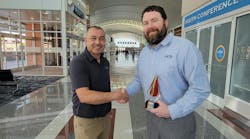SAN DIEGO --
For some passengers going through the new full-body scanner at Lindbergh Field, exposure to radiation is a concern.
"I don't know how much it puts out, that hasn't been disclosed, has it?" asked one passenger.
Three U.S. senators on the Senate Committee on Homeland Security and Government Affairs wrote a letter to the Department of Homeland Security and the Transportation Security Administration stating, "The issue of radiation … has not been adequately addressed by TSA."
Dr. Steve Smith of Rancho Bernardo said that the safety question is misguided.
"This is absolutely safe; there's no question at all," he said.
Smith is the original developer of the technology called backscatter X-ray due to the fact it touches the skin then scatters back to the X-ray source.
"The amount of radiation used in these devices is miniscule," said Smith.
Twenty years ago, Smith developed a prototype of the body scanner that is now used in 51 airports today, including Lindbergh Field. He said it's safe for pregnant women, children and even frequent fliers.
"The actual number on it is 3 micro rims. In comparison, natural background radiation is about 300 micro rims per day," he explained.
Smith said the X-rays are not strong enough to penetrate all the way to bones or organs like stronger medical X-rays do.
Dr. Bette Blankenship, a medical physicist with Sharp Healthcare, agreed and said of the radiation exposure, "This device is very minimal, almost immeasurable.
Blankenship said that the backscatter X-ray exposure before the flight is much less than the exposure during the flight itself.
"As you take maybe a six-hour flight, you're going to get 600 times the energy deposited in you than from this kind of device," she said.
Copyright 2010 by 10News.com. All rights reserved. This material may not be published, broadcast, rewritten or redistributed.




